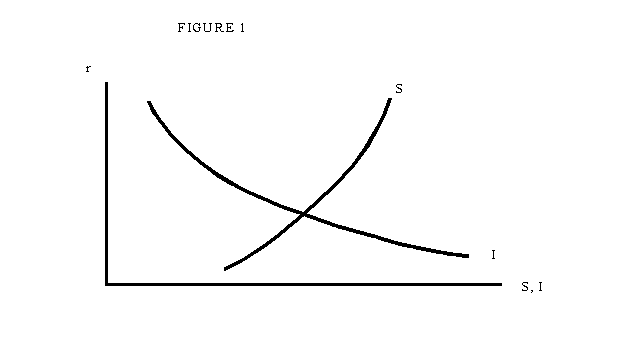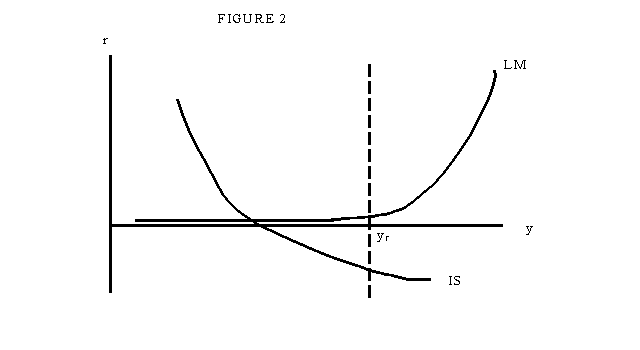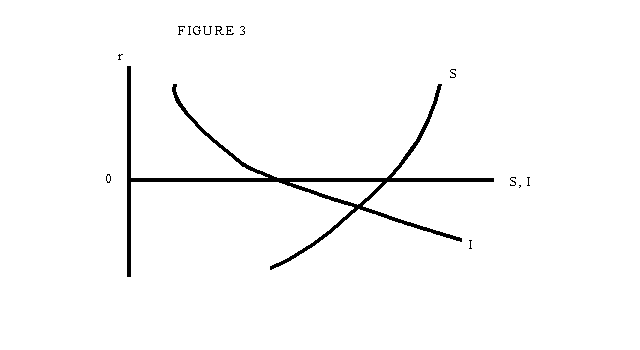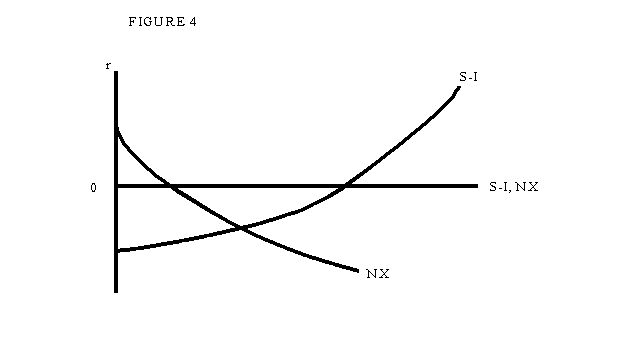
SYNOPSIS: Mathematical arguments for a policy of inflation in Japan.
Last spring I argued, in an essay entitled Japan's trap , that the natural answer to Japan's liquidity trap is a deliberate, announced policy of moderate inflation - and that monetary policy is ineffective precisely because the private sector expects the Bank of Japan to behave responsibly, so that current monetary expansion does not change expectations about future price levels. The essay, its sequel , and a technical paper for Brookings created a flurry of interest, but unsurprisingly has not altered the course of actual Japanese policy. Instead conventional "canons of soundness" - a continuing commitment to stable prices and to a strong or at least not too weak yen - have thus far prevailed. Japan's recovery strategy, such as it is, involves expansionary fiscal policy together with bank recapitalization; while the Bank of Japan has actually been engaging in some quite unconventional monetary operations (lending directly to troubled firms, with their debt as collateral), it is doing so in a surreptitious, almost shamefaced manner, and therefore not creating the sort of "credible promise to be irresponsible" that I argued was necessary.
But this story is far from over. Indeed, events in the last few months have only strengthened the case I made last spring. As I suggested in the original piece, Japan's fundamental currency problem is not an excessively weak yen but a yen that, absent a commitment to inflation, tends to be too strong to effect the necessary export of capital; certainly the recent runup in the yen makes that position more comprehensible. The actual prospect of bank recapitalization also makes it much clearer than before that fixing the banks, while necessary on its own merits, is unlikely to do much to solve the economy's macroeconomic problems. And recent headlines about both the size of Japan's prospective budget deficit and the decision of Moody's to downgrade Japanese bonds suggest that the limits to fiscal policy, if they have not already been reached, will be reached soon. So the time seems ripe for a restatement of the argument that what Japan needs is moderate, "managed" inflation.
In addition to reemphasizing the case for Japanese inflation in the light of recent events, this note has a secondary purpose: to try, once again, to make it clear that this is not an outlandish or peculiar proposal. On the contrary, the proposition that the Japanese economy needs a negative real interest rate, which means that it needs expected inflation, is a direct implication of the same framework that most working macroeconomists routinely use for policy analysis. The utter conventionality of my reasoning may have been obscured in the earlier essays by the use of an "intertemporal maximization" framework, something I felt was necessary in order to avoid certain kinds of confusion. (If you really want to know, I had initially believed that the "Pigou effect" might play an important role in the discussion, and needed the intertemporal model to convince myself that it did not). In any case, this time I present the argument in terms of an absolutely conventional open-economy IS-LM model, exactly the same model that is presented, say, in the Krugman-Obstfeld international economics textbook or Olivier Blanchard's macroeconomics textbook.
This essay is in four parts. The first part revisits John Hicks' original statement of the IS-LM model, and shows that in that most conventional of macroeconomic models the statements that "the economy is in a liquidity trap" and that "the full-employment equilibrium real interest rate is negative" are essentially equivalent. The second part opens the economy up to both goods and capital mobility, showing that - once again in the most conventional of frameworks - a liquidity trap can occur in an open economy, and that when it does it involves a currency that cannot be made weak enough. The third part discusses the continuing relevance of this analysis to Japan. A final section offers some reflections on the debate.
1. The real interest rate and the liquidity trap
Let's start where Hicks did in his original exposition of the IS-LM model, back in 1937: with savings and investment. As Hicks pointed out, the "classical" theory of the rate of interest was that it was determined by the requirement that desired savings equal desired investment, as in Figure 1 . But once one considers the possibility that the economy will not produce at full capacity, one realizes that savings and investment are contingent on the level of real income as well as the real interest rate - that they should be written as S(r,y) and I(r,y). This does not make Figure 1 wrong; but it means that it shows the equilibrium real interest rate only at a particular level of real output. An increase in real output would presumably increase both savings and investment at a given real interest rate; but the conventional assumption is that it increases savings more, so that the real interest rate falls. By considering all possible levels of real output, then, one sweeps out the IS schedule of Figure 2 , which is defined by the equation
S(r,y) = I(r,y)
Meanwhile, of course, the money market must also clear; the conventional equation is simply
M/P = L(y, i)
where i is the nominal interest rate, the real rate plus expected inflation. To draw the implied LM curve one must specify the expected rate of inflation; Figure 2 is drawn on the assumption that expected inflation is zero.
Even without specifying the details of money demand, it is immediately apparent that the LM curve cannot go below zero, for the simple reason that at a negative nominal interest rate cash would dominate bonds as a store of value. Thus whatever the LM curve looks like in the "normal" range, its overall shape must be pretty much as illustrated in the figure, with its left portion flat at or near a zero interest rate. And if the IS curve happens to pass through that flat section, the economy is in a liquidity trap: the interest rate is hard up against the zero constraint, and cannot be reduced through monetary expansion.
All this is the most basic textbook stuff. But in Figure 2 I have put in a bit more than the textbook usually does, by indicating the "full employment" level of output yf and showing the continuation of the IS curve, beyond a zero real interest rate. What is immediately clear from this more complete version of Hicks' picture is that if an economy is in a liquidity trap, it must be the case that savings would exceed investment at full employment even at a zero real interest rate - that
S(0, yf ) > I(0, yf )
In terms of the original savings-investment diagram, then, if we draw the curves at the full-employment level of output they must look like Figure 3 .
And what both figures make clear, of course, is that the problem is not that there is no real interest rate that will make savings and investment equal at full employment; it is that the full-employment real interest rate is negative. And monetary policy therefore cannot get the economy to full employment unless the central bank can convince the public that the future inflation rate will be sufficiently high to permit that negative real interest rate.
That's all there is to it. You may wonder why savings are so high and investment demand so low, but the conclusion that an economy which is in a liquidity trap is an economy that as currently constituted needs expected inflation is not in the least exotic: it is a direct implication of the most conventional macroeconomic framework imaginable.
2. The open economy
Perhaps the most common objections to the foregoing analysis involve the openness of the Japanese economy to international capital flows. Some argue that as long as there are positive-real-return investments abroad, a liquidity trap cannot happen; others that "managed inflation" would lead to a collapse in the yen, and/or would fail to stimulate the economy because the capital would simply flee abroad. Well, there is a standard way to introduce exchange rates, capital mobility, and international trade into the IS-LM framework; let's see what it says.
Start with the goods market: in an open economy the savings-investment identity must be extended to take account of net exports, with the conventional version looking like this:
S(r, y) - I(r,y) = NX(e, y, y*)
where e is the logarithm of the real exchange rate, measured the non-Anglo Saxon way (higher means weaker currency). I include foreign output y* simply as a matter of completeness.
The crucial question then becomes, what determines the real exchange rate? A standard answer (used, for example, in the Fed's Multi-Country Model) is some version of the "anchor" model. We imagine that investors have some notion of the long-run equilibrium real exchange rate - call it eL. Ignoring issues involving investment income, we may think of this long-run rate as corresponding to zero net exports at full employment; that is, eL is implicitly defined by
NX(eL , yf , y*) = 0
We suppose that investors expect the actual rate to converge gradually toward that long run value over time, say by eliminating a fraction g of the gap per year. We also imagine that expected returns on domestic and foreign bonds are equalized. This implies the arbitrage equation
r - r* = g(eL - e)
where r* is the foreign real interest rate, and hence the real exchange rate equation
e = eL - (r - r*)/g
So the real exchange rate, and hence the level of net exports at any given level of real output, depends on the real interest rate.
Three points should now be immediately apparent.
First, a zero or even a negative real interest rate does not mean that the currency will drop without limit. The reason is that as long as people have some notion about what constitutes a "normal" real exchange rate, a current real rate much weaker than that normal level will imply expected real appreciation in the future - which will make domestic bonds an attractive asset even if their real return is negative in terms of the domestic price index.
Second, because the real exchange rate does not depreciate without limit, even a negative real interest rate implies only a finite value of net exports at any given level of output.
Third, this means that even an economy that is completely open to capital movement can still suffer from a liquidity trap. Figure 4 illustrates this possibility, showing the savings-investment gap and the level of net exports as functions of the real interest rate, both contingent on the full-employment level of output. The reason net exports depend on the real interest rate is, to repeat, that the real interest rate determines the real exchange rate, which in turn determines net exports for any given y. (Given the assumption that eL implies zero net exports at full employment, we have NX = 0 when r = r*).
As drawn, getting S-I equal to NX at full employment requires a negative real interest rate; if expected inflation is insufficient, a zero nominal rate will be insufficient to get the economy to full employment, and the economy will find itself in a liquidity trap in spite of its ability to export savings abroad. (The ability to export capital makes a liquidity trap less likely, because now even a country whose full-employment savings exceed investment at a zero real interest rate need not be in such a trap; but it still can find itself liquidity-trapped).
How is this possible? Because expectations that the real exchange rate will tend to revert to its "normal" level limit the extent of real depreciation, even at a zero real rate. So the country cannot get its currency weak enough, where the criterion for "weak enough" is "weak enough to produce a current account surplus large enough to absorb the savings-investment gap at full employment". And one of the reasons expected inflation is necessary is precisely to achieve a weaker real exchange rate than would otherwise be possible.
Again, this is the natural conclusion from the textbook model. If you feel that this framework is too ad hoc, you can check the logic against the implications of more micro-founded models - and I have. It turns out to stand up quite well.
Given how conventional the reasoning is, the opposition to its conclusions is therefore a bit puzzling. I was fairly amazed when The Economist, which usually gets such things right, bought into the naive objection of some commentators that expected inflation would be ineffective, because it would simply lead the Japanese to "plonk" their savings abroad. Because capital account plus current account must equal zero, any capital export by Japan would necessarily have as its counterpart an increased current account surplus - which means that it would help close the savings-investment gap. So plonking is exactly what the doctor ordered - and in any case, the incentive to plonk is already taken account of by the standard framework. Slightly less amazing, but still a bit puzzling, is the common objection that pushing the real interest rate below zero would weaken the yen. Indeed it would - but that is true of any interest rate reduction. If Japan currently had 5 percent interest rates, but its macroeconomic situation was otherwise the same, there would be almost universal approval for rate cuts by the Bank of Japan. What's so special about zero?
Still, many people clearly are made uncomfortable by the idea of deliberately seeking inflation, and the Japanese government is trying other ways of getting the economy moving. Is the assessment that the economy needs a negative real interest rate still valid?
3. Japan's current situation
I cannot see any way to deny the proposition that the Japanese economy,
as currently constituted, would need a negative real interest rate
to achieve full employment. To argue that inflation is unnecessary, then,
one must believe that other policies can shift the savings and/or investment
schedules sufficiently to make the required real interest rate positive.
The most commonly cited policy instrument is bank reform. Although clear thinking is not exactly prevalent in this discussion, presumably the idea is that Japanese investment is depressed because undercapitalized banks are unable to provide firms with adequate credit. I have criticized this view in an earlier note, and discussed the role of financial intermediation at length in my Brookings Paper. Let me simply reiterate the main points. First, Japan has not suffered from anything like a bank run; and as long as undercapitalized banks have no trouble retaining depositors, economic logic suggests that they should if anything lend too much rather than too little. Second, even anecdotal evidence of credit constraints dates, at the earliest, from late 1997; there is no evidence at all for the idea that the prolonged stagnation of the economy before then was due to inadequate intermediation. Third, while tightening of capital standards has led to some complaints about credit constraints over the past year, much of this probably represents banks acting more, not less, appropriately.
That said, it is possible that recapitalizing the banks will reverse some of the recent credit squeeze - if only because the regulators will decide, once again, to look the other way. But this would at best only return Japan to the very unsatisfactory status quo ante; it is highly unlikely that it would shift the investment schedule out sufficiently to resolve the liquidity trap.
Which leaves us with fiscal policy - essentially, resolving the savings-investment gap by having government deficits absorb the excess savings.
One question one might ask about the idea of resolving Japan's trap with deficit spending is, why would this be considered a preferred alternative to a negative real interest rate? Suppose that the private sector is so into deferred gratification that at the margin it is willing to trade off one real yen of consumption now for slightly less than one real yen in the future. What's wrong with that? Why force the public to consume more now and less later than it apparently wants to? Do we regard price stability as so important a goal that it trumps the usual principle that prices (such as the real interest rate) should be allowed to reach a level that matches supply and demand?
But anyway, as a practical concern the main point about fiscal policy in Japan is that it is clearly nearing its limits. Over the course of the past 7 years Japan has experienced a secular trend toward ever-growing fiscal deficits; yet this has not been enough to close the savings-investment gap. One need not claim that fiscal policy is completely ineffective: as Adam Posen has emphasized, fiscal expansion has pushed up Japanese growth when tried. But how much fiscal expansion can the government afford? Between 1991 and 1996 Japan's consolidated budget went from a surplus of 2.9 percent of GDP to a deficit of 4.3 percent, yet the economy was marked by growing excess capacity. When the Hashimoto government, alarmed by the long-run fiscal position, tried to narrow the deficit in 1997 the result was a recession; now fiscal stimulus is being tried once again. But projections already suggest that Japan may be heading for some awesome deficits - say 10 percent of GDP next fiscal year - with no end to the need for fiscal stimulus in sight. Given that Japan is already in far worse fiscal shape than, say, Brazil on every index I can think of - not just current deficit, but debt to GDP ratio and hidden liabilities arising from an aging population, the need for bank and corporate bailouts, etc., one has to wonder where the fiscal-expansion strategy is leading.
4. Reflections on the debate
Any economist who knows his theory but has also watched real-world policymaking
knows that there are actually two quite different sorts of "conventional
wisdom" in the world of economic affairs. On one side there are the
standard, textbook economic models - like the IS-LM model - that shape
informed policy analysis and discussion. On the other there are the "canons
of orthodoxy and 'soundness'" (the phrase is from Ragnar Nurkse's
International Currency Experience) that define what a responsible
central banker is supposed to sound like. Nurkse went on to point out that
"It is characteristic of such canons that they tend to assume an independent
existence of their own." That is, the canons may not correspond very
closely to what the models say. Certainly nothing in the textbooks suggests,
to take a non-random example, that price stability is as important a principle
as most finance minsters and central bankers suppose it to be. Still, most
of the time the standard textbook analysis and the orthodoxy of central
bankers are at least reasonably in accord.
But what happens if a change in circumstances places bankers' orthodoxy and basic economic analysis in conflict? That, I would argue, is what has happened in the case of Japan. The standard macroeconomic model that we all use to make sense of the world tells us, quite clearly, that this is an economy that "wants" a negative real interest rate; yet the bankers' orthodoxy regards price stability as an excellent thing, not to be compromised. Which side do we take?
It is easy to understand why government officials and many journalists would end up choosing the bankers' orthodoxy. I can even appreciate that many economists might be reluctant to accept a radical policy proposal like managed inflation, even if it is the natural implication of a thoroughly conventional model. But what is disappointing is that many economists and economic commentators do not even seem to perceive the conflict. They know that price stability is good, inflation bad - and are so anxious to uphold the canon that their normal analytical sense seems to desert them. Some fall into naive accounting errors, like imagining that capital can somehow flee a country without a corresponding current account surplus. Others invent on the fly all sorts of novel theoretical justifications for the canon. Japan, you see, is different: expected inflation will actually raise real interest rates; lower real interest rates will increase savings, yet have no effect on investment; a weaker yen will do nothing to increase net exports, but will somehow reduce liquidity; and so on. The people making these arguments would be justifiably caustic if someone advocating unorthodox policies asserted that all the relevant supply curves slope down and the demand curves up; yet it appears that ad hockery in the defense of orthodoxy is no vice.
I hope for Japan's sake that the outlook is not as gloomy as it now appears. But if, as I expect, the current recovery strategy fails, there is another strategy readily at hand - a strategy that is firmly grounded in the most conventional of macroeconomic models.



